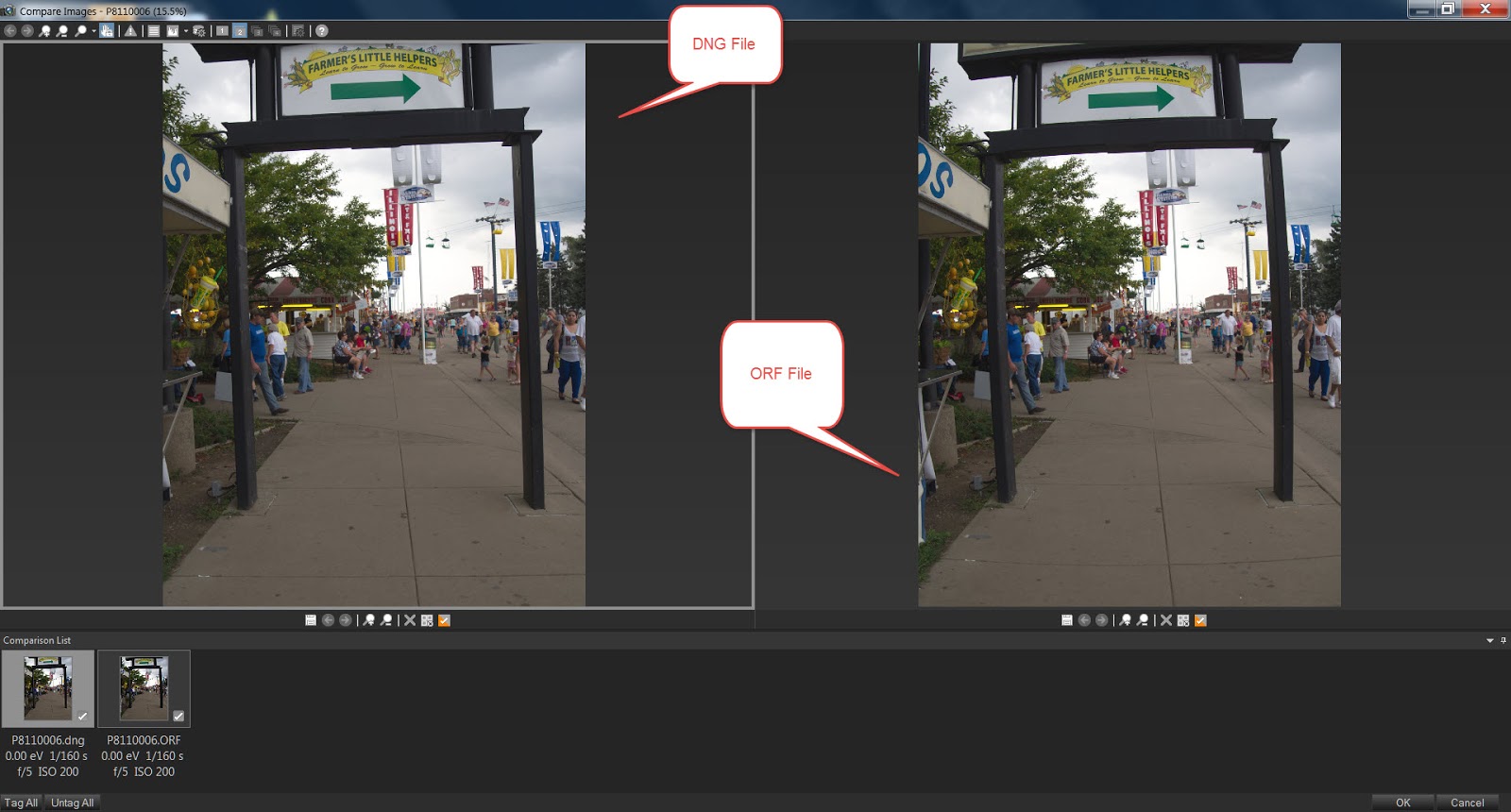______
In the ACDSee Pro 8 help file topic, "Viewing Raw Images" I came across this statement, "ACDSee will automatically apply geometry corrections to DNG files that include geometric distortion correction tags. DNG files created from the Adobe DNG Converter© will often generate geometric distortion tags for micro 4/3rds cameras. "
If I am interpreting this correctly, then the Adobe DNG converter reads the distortion correction built into the raw files, and translates them into the DNG equivalent and stores them with the dng file. Then ACDSee Pro will read and apply those correction numbers to the image.

I decided to test this out. And whadayaknow, it works!
I shot a photo with my E-M10 and the kit lens, the OLYMPUS M.14-42mm F3.5-5.6 II R. I converted it with the Adobe DNG converter. and displayed both in ACDSee Pro 8. It works! See the screen capture below, it should be obvious.
These are unedited. I am going to go through my photos shot with other lenses to see if I can find any discrepancies.
My experience with the DNG converter was really very good compared to the earliest versions I tried years ago. It was no longer a command line app, and it offered a lot of useful options. It took about 3-4 minutes to convert 34 16 MB orf files.
I wonder if camera systems OTHER than m43s and who include distortion correction will work this way with DNG and ACDSee? I mean DNG would likely have any distortion tags in the same place regardless of the camera source, wouldn't it? Anyone care to try?
But this does bring up some questions:
- If ACDSee can read that info from DNG, why can't it read the data directly from the native raw files?
- It implies that this only works for m43s, why would a dng sourced from m43s be any different than one sourced from Sony or Nikon? (Don't get me wrong, I use m43s and I happy they are using m43s. But why m43s?).
I'll add more info when I get it, I guess!
No comments:
Post a Comment